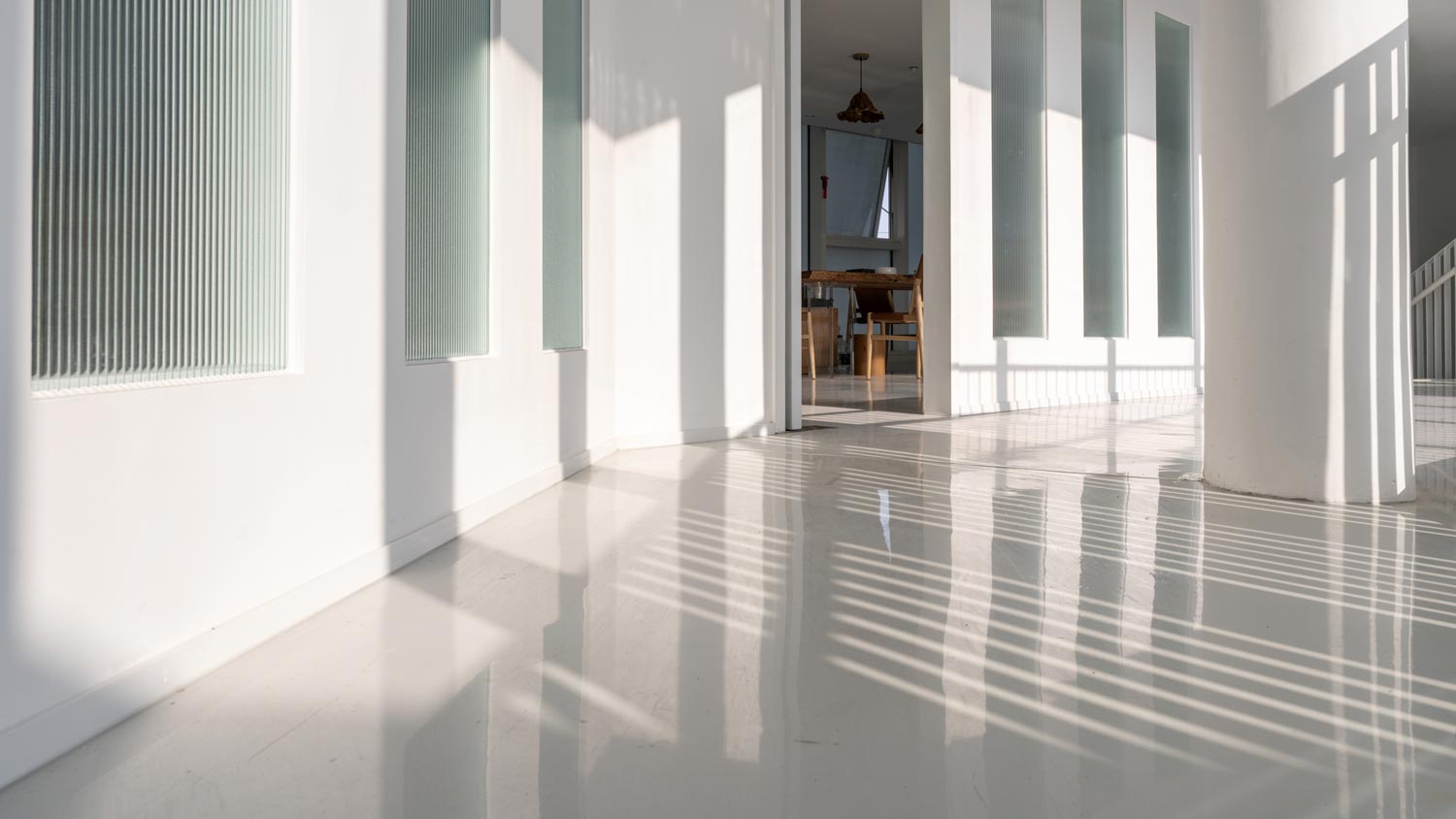
Whether you’re planning on putting in a concrete driveway, patio, or staircase, use this concrete delivery cost guide to get an accurate estimate.
Understanding types of concrete finish makes planning concrete projects easier


Are you looking to update the exterior of your home? A great way to improve your curb appeal and add some intrigue to your property is to finish concrete surfaces like patios, walkways, driveways, and more. There are a few different types of concrete finishes to consider, each of which adds a unique flair to your home.
Let’s take a closer look at the different types of concrete finishes available to help you make an informed decision.
| Type of Finish | Total Cost Per Sq Ft |
|---|---|
| Acid stained concrete | $12-$25 |
| Broom finish | $8-$12 |
| Colored concrete | $8-$12 |
| Exposed aggregate | $8-$12 |
| Polished concrete | $8-$12 |
| Salt finish | $8-$12 |
| Stained concrete | $18-$20 |
| Stamped concrete | $12-$18 |
| Trowel finish | $8-$12 |
Let all the bleed water evaporate before finishing your concrete. This can take anywhere from 20 minutes to four hours.

Stamped concrete finishes have become increasingly popular due to their versatility and affordability. This type of finish involves pouring concrete and then imprinting it with a stamp to give it a unique pattern or texture. A wide variety of stamp patterns are available, ranging from brick or tile patterns to more intricate designs like leaves, natural stones, or flowers. You can choose color-stamped concrete to match the surrounding environment, creating a seamless and cohesive look.
One of the benefits of stamped concrete is that it adds friction to the surface, making it a popular option for outdoor concrete slabs that see a lot of foot traffic. Without the stamped patterns, smooth concrete can become slick when wet, posing a hazard for heavily trafficked areas.
Stamped concrete costs between $12 and $18 per square foot to install, making it one of the more costly options. Additionally, it’s not usually budget-friendly to DIY, as you’d need to buy or rent large concrete stamps, which are also expensive.
| Pros | Cons |
|---|---|
| Highly customizable | Expensive |
| Reduces slip risk | Not DIYable |
Best For: Outdoor walkways and patios where the look of bare concrete isn’t desirable

Exposed aggregate concrete finishes are perfect if you're looking for a textured look that's both durable and slip-resistant. After the concrete is poured, your contractor will spread a thin layer of aggregate over the top to set into the surface and then cover that with additional concrete. Then, they’ll allow the concrete to cure partially before removing the top layer of concrete to reveal the aggregate below. This can create a unique look that can complement your outdoor space, often featuring a mix of stones, pebbles, or shells.
You can also choose to color exposed aggregate finishes, which will further enhance the look of your driveway or patio. Another advantage of this type of finish is its slip-resistant surface, which can be beneficial for households with young children or elderly family members. However, while the aggregate provides friction, it can also be less comfortable to walk on with bare feet than perfectly smooth concrete.
It’s also worth mentioning that getting this finish to look good is challenging, so we recommend hiring a concrete finishing company near you for the best results.
| Pros | Cons |
|---|---|
| Affordable | Hard to DIY |
| Slip-resistant | Less comfortable |
Best For: Slip-resistant finish on walkways, patios, and concrete steps

For those looking for a modern and sleek finish, polished concrete is an excellent choice. This finish involves grinding down the concrete surface using higher and higher grit sanding discs to unveil a smooth surface that reflects light beautifully. You can also seal polished concrete with a high gloss coating or a matte finish, depending on your personal preference.
When it comes to polished concrete floor costs, the price can depend on several factors, including the size of the area, the condition of the existing concrete, the level of polishing desired, the location, and the actual concrete slab cost.
One of the main advantages of polished concrete is that it's low maintenance and easy to clean. It's also scratch-resistant and highly durable, making it an excellent option for high-foot traffic areas. In addition to its aesthetic and practical benefits, polished concrete also offers environmental advantages over other options that use stains and finishes that could put added strain on the environment.
| Pros | Cons |
|---|---|
| Affordable | Slippery when wet |
| Eco-friendly | Best for indoors |
Best For: Indoor concrete floors where water and moisture won’t make the surface slippery
Stained concrete finishes are an excellent option if you're looking to enhance the natural color variations of concrete, which can create an earthy and organic feel. The staining process involves applying a chemical stain to the concrete, which reacts with the surface to produce a unique color while still leaving the texture of the concrete visible.
Stained concrete finishes come in a decent variety of colors, although not as many as colored concrete. Your options range from natural tones like tan and brown to unique colors like blue or green, but the stain won’t produce as vibrant a color as a dye. You can use concrete stains alongside other finishing options for more customization options. However, it’s worth noting that the stained concrete floor cost can be steep.
| Pros | Cons |
|---|---|
| Unique appearance | Expensive |
| Maintains texture | Limited colors |
Best For: Unique but mild color variations on outdoor surfaces

For a bold and vibrant statement, colored concrete finishes are an excellent choice. Your contractor can add pigments to the concrete during the mixing process, resulting in a wide array of color options. Since the colors depend on dyes rather than stains, you have far more options with colored concrete, ranging from muted colors to more vibrant ones. From warm earth tones to cool blues and greens, colored concrete allows you to express your personality and create visually striking concrete patio finishes.
It's important to note that colored concrete may require periodic sealing to maintain its vibrancy for years to come. Sealing the surface helps protect the color from fading due to UV exposure and enhances its resistance to stains and weathering. It also makes the surface easier to clean and maintain, prolonging the lifespan of your colored concrete finish.
| Pros | Cons |
|---|---|
| Many color options | More maintenance |
| Affordable | Can fade over time |
Best For: Adding vibrant colors to outdoor surfaces that you don’t mind resealing regularly
Looking to add a touch of uniqueness to your concrete driveway or patio? Consider an acid stain finish. Acid stains react with the minerals in the concrete, creating a one-of-a-kind marbled effect with beautiful, dark, earthy tones. Acid stain finishes are durable and low maintenance, adding a touch of sophistication to any outdoor space.
Since acid stains can be dark and have a marbled effect, they can sometimes hide imperfections on existing concrete, potentially saving you money on concrete resurfacing costs.
One of the remarkable aspects of acid stain finishes is the range of colors you can achieve. From warm browns and rich reds to subtle greens and blues, acid stains offer a wide palette of earthy and natural hues, as well as some unique color combinations. Since acid stain reacts with the minerals in the concrete, each application produces a unique result. No two acid stain finishes are the same, making your project truly one-of-a-kind.
| Pros | Cons |
|---|---|
| Totally unique | Expensive |
| Marbled finish | Dangerous to DIY |
Best For: A unique, colored appearance that requires minimal maintenance

If you prioritize functionality and safety, don’t want to pay extra for stamped concrete, and don’t like the look of exposed aggregate, a broom finish is an excellent choice. This finish involves sweeping a broom over the freshly poured concrete to create a subtly textured surface. The resulting texture provides excellent slip resistance, making it ideal for areas prone to wet conditions. Broom finishes are common on driveways, pool decks, and sidewalks where safety is a top priority.
Keep in mind that the rippled texture will make your concrete surface more likely to hold dirt and debris, and it can make cleaning the surface a bit more challenging. But if safety is more important to you, then a broom finish is a great option.
| Pros | Cons |
|---|---|
| Slip-resistant | Not unique |
| Affordable/DIYable | Harder to clean |
Best For: Slip resistance on sidewalks, walkways, pool decks, and driveways
A salt finish is similar to exposed aggregate, but in this case, the aggregate is rock salt, and it doesn’t remain behind in your concrete. Your contractor will spread rock salt over the surface of your freshly poured concrete and allow it to cure. Then, they’ll spray the concrete with water to dissolve the salt crystals, leaving behind small divots on the surface.
Salt finishes create yet another unique appearance that gives the concrete texture. Not only does this look beautiful, but it adds friction to reduce the risk of slipping. It’s a great way to add some intrigue to your patio or walkways, where safety is also a concern.
Since salt finishes leave small divots in your concrete surface, water can get trapped and freeze, potentially damaging the surface. As such, salt finishes are best for warm climates.
| Pros | Cons |
|---|---|
| Affordable | Hard to DIY |
| Slip-resistant | For warm climates |
Best For: A lightly textured, slip-resistant surface in warmer climates
A contractor installing concrete with a troweled finish will pour the concrete, smooth it, level it with a float, and then let the concrete cure partially. Before the concrete sets fully, the expert will smooth the surface with hand trowels, creating a lightly textured surface.
Troweled concrete is entirely unique from project to project because the smoothing is all manual. It can sometimes be a bit more expensive than some other finishes, but it usually falls within a similar price range as exposed aggregate, broom finishes, and other textured options.
A troweled finish can also be difficult to DIY, so we recommend you hire a concrete contractor to get the right texture and appearance.
| Pros | Cons |
|---|---|
| Slip-resistant | Time-consuming |
| Clean appearance | Hard to DIY |
Best For: A more traditional appearance where slip-resistance is still beneficial
Jacqueline DeMarco contributed to this piece.
From average costs to expert advice, get all the answers you need to get your job done.

Whether you’re planning on putting in a concrete driveway, patio, or staircase, use this concrete delivery cost guide to get an accurate estimate.
Need to breathe new life into your exterior stoop? Use this guide on concrete step repair cost to see the price of a professional repair.

Concrete driveways stand up to a lot of pressure over the years. How much do concrete driveway repairs cost when it's time to give it a little TLC?

It’s important to choose the right driveway material. Learn the differences between gravel and concrete driveways to choose the right one for your home.

A concrete floor provides a solid base for any room, and adding a floor coating makes it feel less utilitarian. Here are the questions to ask a pro about this project.

A channel drain installation requires a trench, PVC piping, and concrete. Keep reading to learn how to install a channel drain yourself.